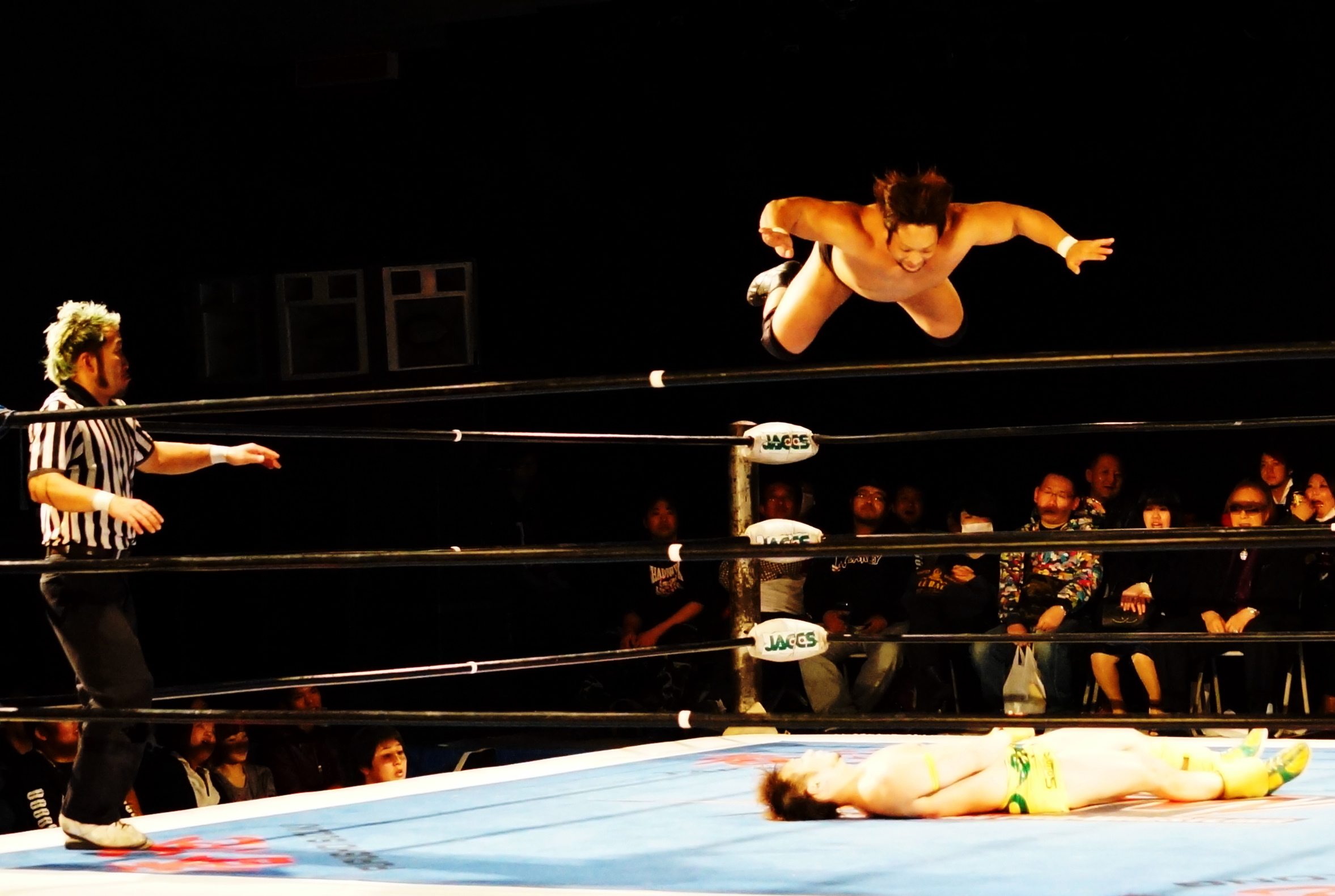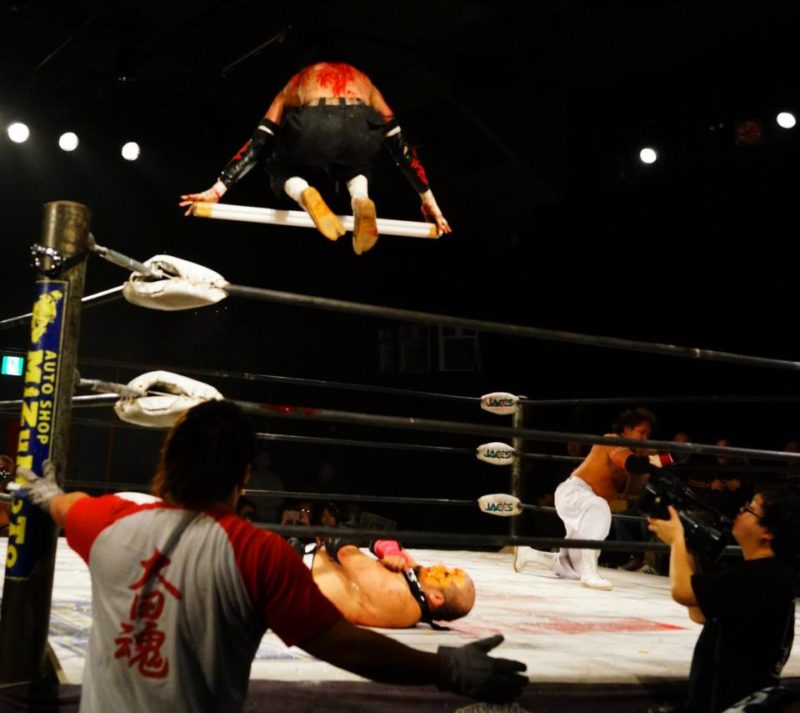Jun 29, 2021
The Wacky World of Japanese Deathmatch Wrestling
Back when I lived in the UK, one of my co-workers told me about how, in his free time, he was a member of a local pro-wrestling team. I was completely shocked. Not the fact that a grown man was into wrestling – though in my mind it was just kids with Hulk Hogan dolls that liked wrestling – but more that, at just five-foot-four, he was shorter than my mum. Surely if someone like him could make it (and he has, he’s currently a minor star in WWE), then it all must be even faker than I had already thought it to be.
I was disavowed of this opinion the first time that I saw a Japanese pro-wrestling deathmatch.
What on Earth is a deathmatch?
Hardcore wrestling, where disqualifications, count-outs, and other such protections are eschewed and weapons are not only permitted but encouraged, has lurked on the fringes of the wrestling circuit since at least the mid-20th century. But it was not until a Japanese organization, Frontier Martial-Arts Wrestling (FMW), got involved in 1989 that hardcore truly lived up to its name.

That’s not what lightbulbs are for
Centered around the organization’s founder and brightest star, Atsushi Onita, FMW became the home of the now infamous ‘deathmatch’ events. In a sport where bulging muscles and acrobatic combat stands oiled-shoulder-to-oiled-shoulder with pantomime, wrestling is not immune to hyperbole. Yet, FMW’s deathmatches came close to their billing, combining the willingness of competitors to risk their personal safety to the millionth degree and a complete disregard for health and safety, all in the name of entertainment.

Lightbulbs are not really meant for gouging.
Throughout the 1990s, Japanese pro-wrestling saw an array of events that could only be described as lunacy. Piranha battles required a victor to hold their opponent under a bath filled with flesh-eating fish for ten seconds. Scorpion battles were similar, if even more fraught with danger. Rings were covered in barbed wire as standard, with fighters being attacked with weapons coiled in it.
Ring of fire
The deathmatch fights were best known for their pyrotechnics, with explosive barbed-wire barricades made of rigged paraffin heaters dotted around the ring or hanging vats of what was essentially flaming napalm. However, as these ‘landmines’ didn’t come cheap, organizations began to cut corners by simply hanging paraffin-soaked cloths around the ring ropes (which were actually barbed wire), leading in 1992 to a ‘Hellfire deathmatch’ event where the entire ring was set ablaze leading to the evacuation of the venue.

Fortunately, no one died (though according to some reports, a sixty-eight-year-old participant was hospitalized with serious burns and fell into a heat-induced coma), and the tradition continued, within 1995 Yukihiro Kanemura being power bombed onto a huge inferno which removed seventy-five percent of the skin tissue on his back and shoulders.
So, you want to see a death match?
Today, the biggest organization is undoubtedly Big Japan Pro Wrestling (BJW), founded by former AJPW wrestlers Shinya Kojika and Kendo Nagasaki in March 1995. Its current starts are the immense Abdullah Kobayashi, who weighs 165 kilos (about 50 percent of which is scar tissue created by barbed wire and the glass of fluorescent light bulbs if looks are anything to go by) and Jaku Numazawa, who you may have seen in the British Jackass-ripoff movie Dirty Sanchez.
Though the budgets are not quite what they once were, BJW still puts on a hell of a show, and events are held all around Japan. If you want to see something totally out of the ordinary – and you have the stomach for blood, it’s definitely worth checking out. But don’t wear white or anything new, as that blood can fly. Take it from me!
Website: bjw.co.jp
Images by Mark Guthrie and Hunter Byron Smith (Own Work)


About the author